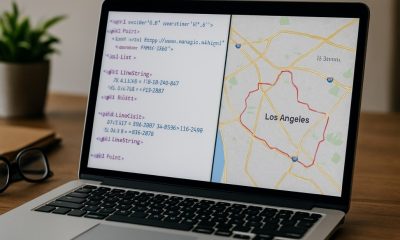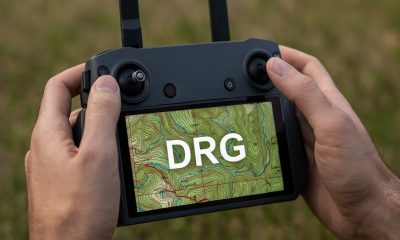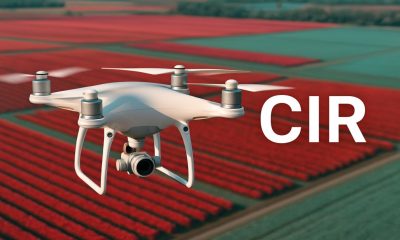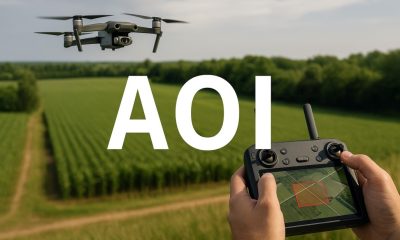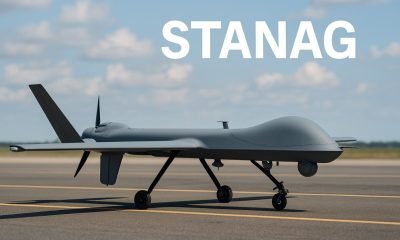- Acronym Guide
- AAM
- ABS
- AC
- ACAS
- ADS-B
- AFAC
- AGL
- AI
- AIM
- ALS
- AM
- AMA
- ANSP
- AOI
- APPI
- AUV
- AUVSI
- ARPAS-UK
- ASTM
- ATC
- BVLOS
- CAA
- CAAC
- CAB
- CASA
- CATT
- CBO
- CBR
- CBRN
- CDMA
- CDR
- CFR
- CIR
- COA
- COMINT
- CORS
- COTP
- COTR
- CPTED
- CV
- C2
- DAA
- DEM
- DFI
- DFS
- DGCA
- DHS
- DOD
- DPA
- DPEs
- DRG
- DRO
- DSM
- DSMX
- DSP
- DSSS
- DTM
- EASA
- EFT
- EO
- EOD
- EO/IR
- ELINT
- EMI
- ESC
- EVLOS
- eVTOLs
- FAA
- FCC
- FCS
- FHSS
- FICCI
- FLIR
- FOB
- FOV
- FPS
- FPV
- GBDAA
- GCP
- GCS
- GDPR
- GML
- GNSS
- GPS
- GSD
- GVC
- HDR
- HOGE
- IACRA
- ICAO
- ICS
- IMU
- INS
- IR
- ISA
- ISR
- ITU
- JARUS
- LAAMS
- LAANC
- LAATM
- LAI
- LBA
- LIDAR
- LOS
- LSALT
- MAC
- MAVLink
- MLIT
- MMS
- MSL
- MTOM
- NDAA
- NCSL
- NFZ
- NIST
- NMEA
- NOTAM
- NPA
- NPRM
- NTIA
- OBIA
- OEM
- OFDM
- OOP
- PASM
- PAV
- PCV
- PdM
- PEC
- PIC
- PID
- PIPL
- PLD
- PM
- PN
- PPK
- PPS
- PSM
- PWM
- UAM
- UAOP
- UAS
- UASTM
- UAV
- UCAVs
- UHD
- UHF
- USV
- UTM
- RAIM
- RCC
- RCS
- RFI
- ReOC
- RePL
- RMS
- ROI
- RPAS
- RPC
- RTH
- RTK
- SaR
- SAR
- SARP
- SBAS
- S.Bus
- SBIR
- SEDENA
- SfM
- SFOC
- SIGINT
- SLAM
- SMS
- SORA
- STANAG
- STTR
- sUAS
- TCAS
- TCCA
- TFR
- TIN
- TOF
- TP
- TPS
- TSA
- VHF
- VLOS
- VTOL
Drone Acronyms
What is ROI (Return on Investment) & How Does it Work?
By
Jacob StonerTable Of Contents

Definition
ROI stands for Return on Investment. It is a performance measure used to evaluate the efficiency or profitability of an investment. ROI is calculated by dividing the net profit from an investment by the initial cost of the investment, typically expressed as a percentage.
Usage
In the drone industry, ROI is used to assess the financial benefits of investing in drone technology. This includes evaluating the cost savings, increased productivity, and revenue generated from using drones for various applications such as agriculture, inspection, and delivery services.
Relevance to the Industry
Understanding ROI is crucial for businesses and organizations considering the adoption of drone technology. It helps in making informed decisions by comparing the potential financial gains against the costs involved. High ROI indicates that the investment in drones is yielding significant benefits, justifying the expenditure.
Example in Use
“By using drones for crop monitoring, the farm achieved a high ROI due to reduced labor costs and increased crop yields.”
The Role of ROI in Drone Business Decisions
1. Justification of Investment: ROI is critical for justifying the investment in drone technology. By demonstrating the potential financial benefits, businesses can make a strong case for allocating funds to purchase drones and related equipment. A high ROI indicates that the investment is likely to pay off, making it easier to secure approval from stakeholders and investors.
2. Strategic Planning: ROI helps in strategic planning by identifying the most profitable uses of drone technology. By comparing the ROI of different applications, businesses can prioritize projects that offer the highest returns. This ensures that resources are allocated efficiently and effectively to maximize financial gains.
3. Cost-Benefit Analysis: Conducting a cost-benefit analysis using ROI allows businesses to weigh the financial benefits against the costs. This analysis helps in identifying potential savings, increased revenue, and other financial gains that drones can bring. It also highlights areas where costs might outweigh benefits, enabling businesses to make informed decisions about whether to proceed with or modify their plans.
4. Performance Measurement: ROI serves as a key performance indicator (KPI) to measure the success of drone-related projects. By tracking the ROI of different initiatives, businesses can assess their effectiveness and make necessary adjustments to improve performance. This ongoing evaluation helps in refining strategies and optimizing the use of drone technology.
5. Risk Management: Evaluating ROI helps in identifying and mitigating financial risks associated with drone investments. By understanding the potential returns, businesses can better assess the risk-reward ratio and make decisions that minimize financial exposure. This risk management approach ensures that investments are made prudently, reducing the likelihood of financial losses.
6. Competitive Advantage: A high ROI from drone technology can provide a significant competitive advantage. Businesses that effectively leverage drones to improve efficiency, reduce costs, and generate new revenue streams can outperform competitors. Understanding and maximizing ROI helps businesses stay ahead in a rapidly evolving market.
7. Resource Allocation: ROI analysis aids in resource allocation by identifying the most lucrative opportunities for using drones. Businesses can allocate budgets, personnel, and other resources to projects with the highest ROI, ensuring that investments are directed towards initiatives with the greatest potential impact.
8. Long-Term Sustainability: Focusing on ROI helps ensure the long-term sustainability of drone operations. By continuously evaluating and improving the return on investment, businesses can maintain profitable operations and support ongoing innovation and growth. This sustainability is crucial for adapting to market changes and technological advancements.
9. Stakeholder Confidence: Demonstrating a strong ROI builds confidence among stakeholders, including investors, partners, and customers. It shows that the business is making sound financial decisions and effectively utilizing drone technology to achieve measurable results. This confidence can lead to increased support and collaboration.
10. Decision-Making Framework: It provides a structured framework for decision-making. It offers a quantitative basis for evaluating different options and making informed choices about drone investments. This structured approach ensures that decisions are data-driven and aligned with the business’s financial goals.
By understanding and leveraging ROI, businesses can make more informed, strategic, and profitable decisions regarding their investments in drone technology. This focus on financial returns ensures that drone initiatives contribute positively to the overall success and growth of the organization.
Frequently Asked Questions about ROI (Return on Investment)
1. How is ROI calculated for drone investments?
Answer: ROI equals the net profit divided by the cost of investment, then multiplied by 100 to get a percentage.
2. Why is ROI important for adopting drone technology?
Answer: ROI is important for adopting drone technology because it:
- Measures Profitability: Helps determine if the financial benefits of using drones outweigh the costs.
- Informs Decision-Making: Provides a clear metric for evaluating the potential success of drone investments.
- Justifies Expenditure: Demonstrates the value and return on spending on drone technology, making it easier to secure funding and support.
- Identifies Areas for Improvement: Helps pinpoint where investments are paying off and where adjustments may be needed to improve returns.
3. What factors influence ROI in drone operations?
Answer: Factors that influence ROI in drone operations include:
- Initial Cost: The purchase price of drones and related equipment.
- Operational Efficiency: Savings in labor, time, and resources due to drone usage.
- Revenue Generation: Additional income from services or improved productivity enabled by drones.
- Maintenance and Upkeep: Ongoing costs for maintaining and upgrading drone equipment.
- Training and Compliance: Expenses related to training personnel and ensuring regulatory compliance.
For examples of these acronyms visit our Industries page.
As the CEO of Flyeye.io, Jacob Stoner spearheads the company's operations with his extensive expertise in the drone industry. He is a licensed commercial drone operator in Canada, where he frequently conducts drone inspections. Jacob is a highly respected figure within his local drone community, where he indulges his passion for videography during his leisure time. Above all, Jacob's keen interest lies in the potential societal impact of drone technology advancements.


